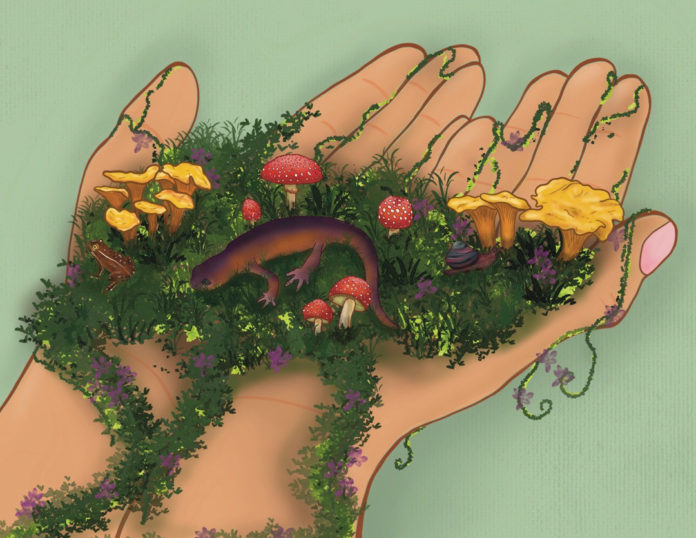It feels like summer is finally upon us; the sun is shining, birds are singing and my seasonal depression is slowly fading. I live for summer because there is no better time to enjoy the great outdoors, however you may choose to do so — hiking up a mountain, tripping on shrooms in the forest, kayaking on a lake, bird watching in the park; the Fraser Valley is chock-full of endless opportunities to enjoy the beautiful nature of the Pacific Northwest. However, oftentimes this privilege can be abused by so many.
This week’s feature is about the species in the Fraser Valley that will soon be eradicated unless every citizen does their part in stewarding their ever-decreasing habitats. It’s easy to think of saving the planet in terms of preserving the melting ice caps or protecting habitats of Bengal tigers, but there are species at risk right in your own backyard that are pleading for your protection. From the little forestsnail to the great blue heron, we are living in a biodiversity hotspot.
If you own land of any kind, you are particularly on the hook to protect these species at risk and the ecosystems they rely on that reside on your private property. If you own a piece of land, consider joining the Nature Stewards Program with the Fraser Valley Conservancy. An expert will visit your property and work with you to create conservation goals specific to the wildlife habitats that reside on your land. You may even find an undiscovered population of an endangered species right in your own backyard.
Even if you don’t have any land to your name and you live in a basement suite with no yard, like me, you are still called to be a steward of the environment and a citizen scientist. Let me give you some easy examples of ways you can give back to the environment that gives you so much.
Learn to identify different native species and report your findings. The Fraser Valley Conservancy has guides to identify local snails, amphibians, owls, salamanders, and frogs. Learn to identify the little creatures you see on your forest walks and report your findings on iNaturalist or the B.C. government’s wildlife reporting tool.
Aid with invasive plant removal. Introduced invasive species degrade the habitat of endangered species by crowding out native plants. Learn about invasive species growing in your area like the giant hogweed, knotweed, tansy ragwort, and wild chervil, and if you see any, report it to weeds@fvrd.ca. If you choose to extract invasive species, remember to never throw them in the compost pile. Instead, put them all in a garbage bag and drop it off at a designated disposal facility.
Take a trash bag with you hiking. Basically, leave everywhere you go better than you found it. Pick up whatever garbage you see when camping, hiking, or doing anything in nature. Just get that garbage out of a slug’s front yard; I’m sure it doesn’t appreciate its home being used as a dump.
Don’t let your cat outside. It is estimated that domesticated cats in Canada kill up to 348 million birds and destroy up to two million birds nests every year. Cats are a leading cause of death for birds and mammals in North America. Even if you think your cat isn’t a cold-blooded killer because you don’t see bodies, think again; more than 75 per cent of all cats’ prey are not brought home.
Stay on trail. If you’re hiking, ATVing, mountain biking, camping, or anything of the sort, stay on the designated trails. Off-trail movement results in the degradation of habitat by soil compaction, as well as increased risk of stepping on a precious critter.
If you see something, say something. See someone feeding ducks at the pond or littering on the trail? Tell them how their actions affect the ecosystem and habitat of endangered species. Yes, it’s very intimidating to go up to someone and tell them what they’re doing is wrong, but your words may stop them from continuing this cycle of destruction in the future.
“We need that collaborative approach of stewardship right here in our backyard, here in the Fraser Valley,” said Aleesha Switzer, UFV alum and project biologist at the Fraser Valley Conservancy. “I think recognizing what’s happening to the Valley, what’s happening to the world with climate change, and the continuous decline of biodiversity. I think we need to be brave and we need to stand up, and that’s what being stewards is about.”
Andrea Sadowski is working towards her BA in Global Development Studies, with a minor in anthropology and Mennonite studies. When she's not sitting in front of her computer, Andrea enjoys climbing mountains, sleeping outside, cooking delicious plant-based food, talking to animals, and dismantling the patriarchy.


